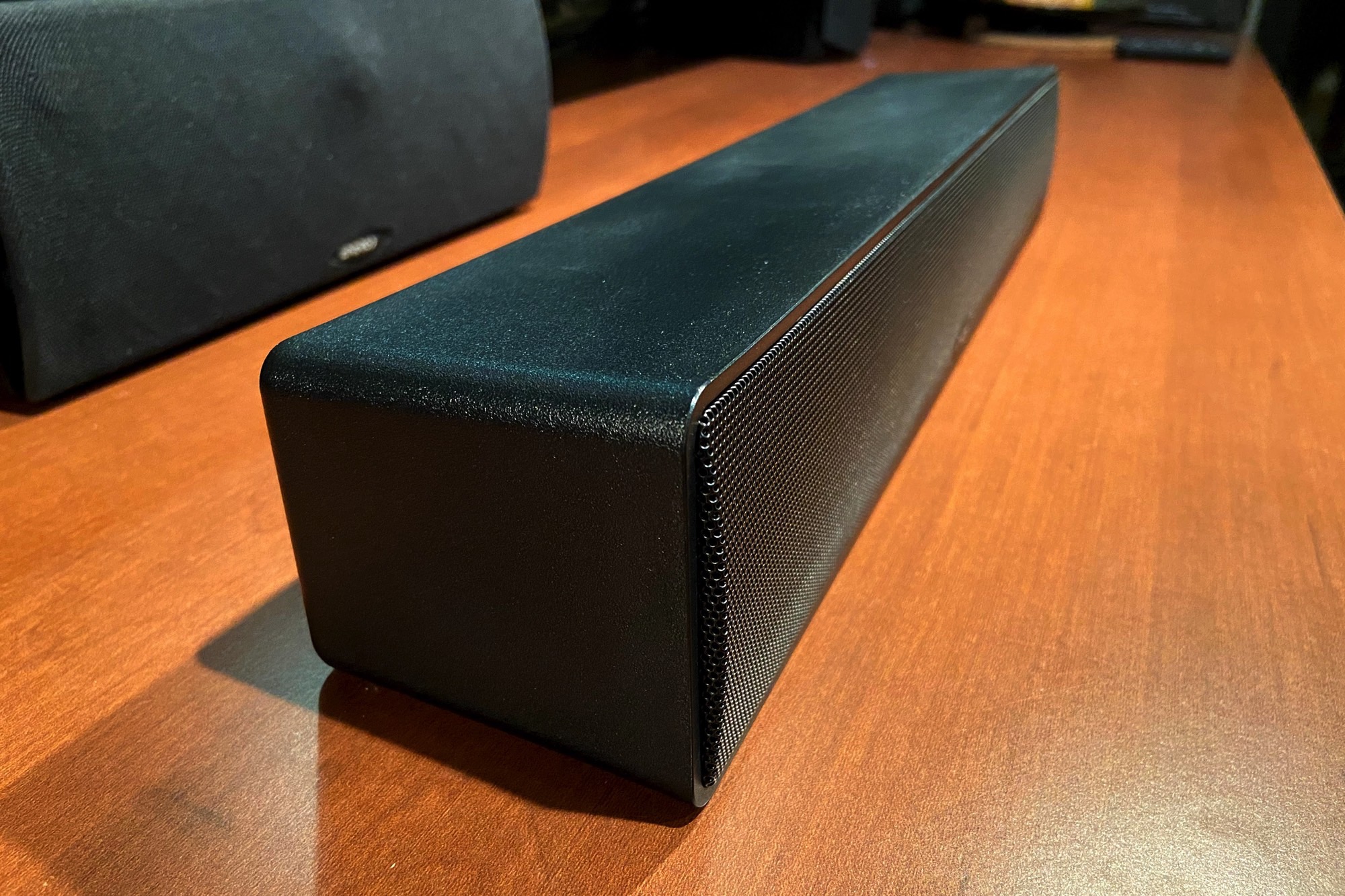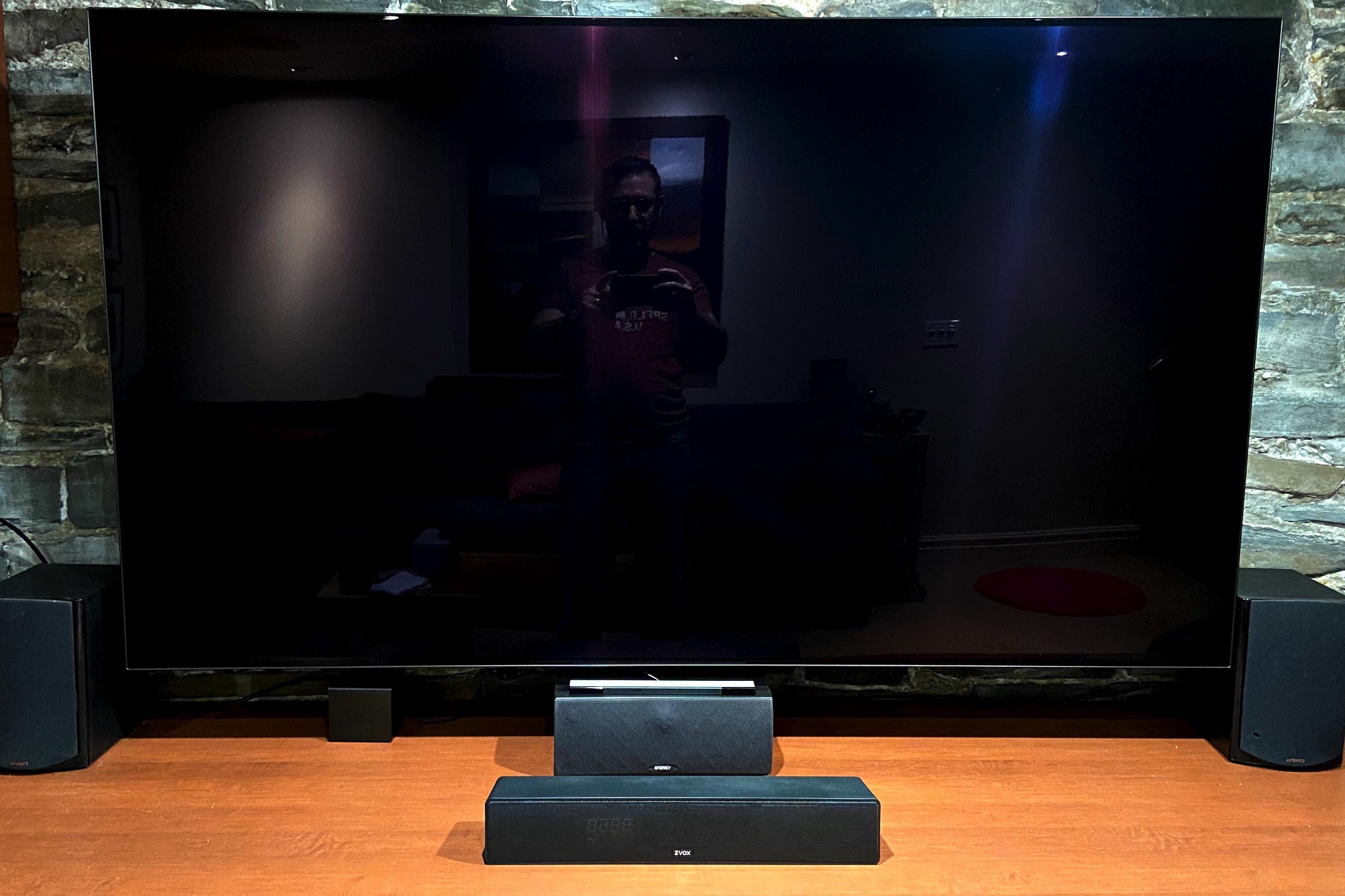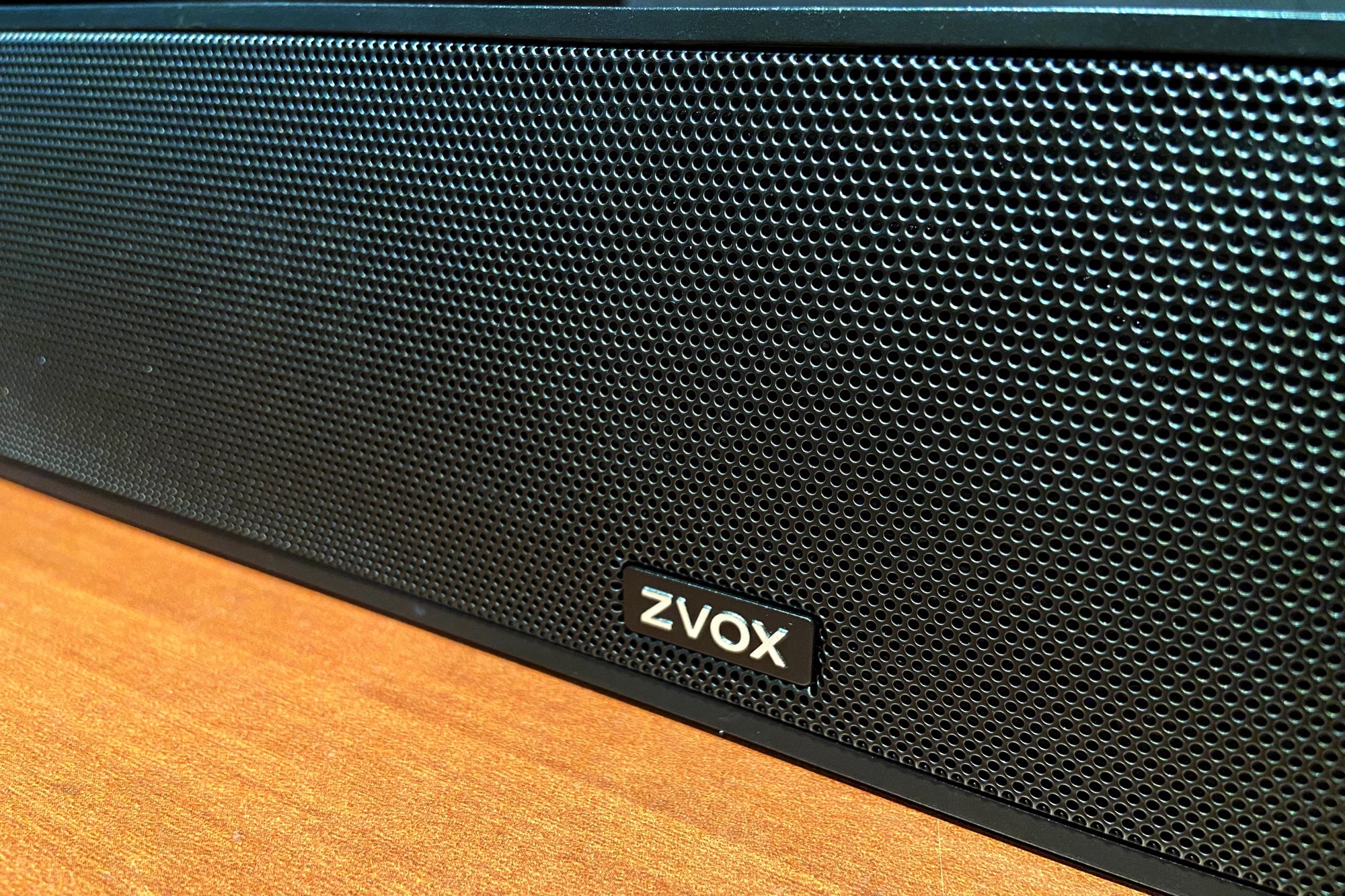- Small footprint
- Easy connections and setup
- Super-clear and adjustable dialog
- Expensive for a small speaker
- No wireless connections for music
We’ve been adding speakers to our home TV setups for years. First two speakers for stereo sound, then four, then five, and on and on. Some of us have full 7.2.4 systems with Dolby Atmos that do an impressive job at mimicking the movie theater experience at home. With a growing number of soundbars, our choices for bigger, better sound are more numerous than ever. But as we envelop ourselves in more, are we actually hearing what matters? When actors, news anchors, or interviewees speak, are we hearing what they’re saying?
Judging by the huge upswing in the use of subtitles for everything from Netflix, to YouTube, to Facebook videos, the answer is no — and it’s not because we’re going deaf.
It turns out that more speakers do not translate into more intelligible dialogue; in fact, it appears to make it harder to hear, especially if the movie or show’s producers haven’t paid close attention to the quality of their audio mix or if there’s a lot of bass.
So it makes sense that Zvox, a company that is heavily focused on improving the clarity of TV sound, has been able to carve out a niche for itself making soundbar-esque speakers with one aim in mind: Making speech easier to hear.
Its latest product is the $300 Zvox Accuvoice AV157 TV Speaker, which packs 12 levels of Zvox’s speech enhancement technology.
Is it the TV dialog enhancer you’ve been waiting for? Let’s find out.
What’s in the box?
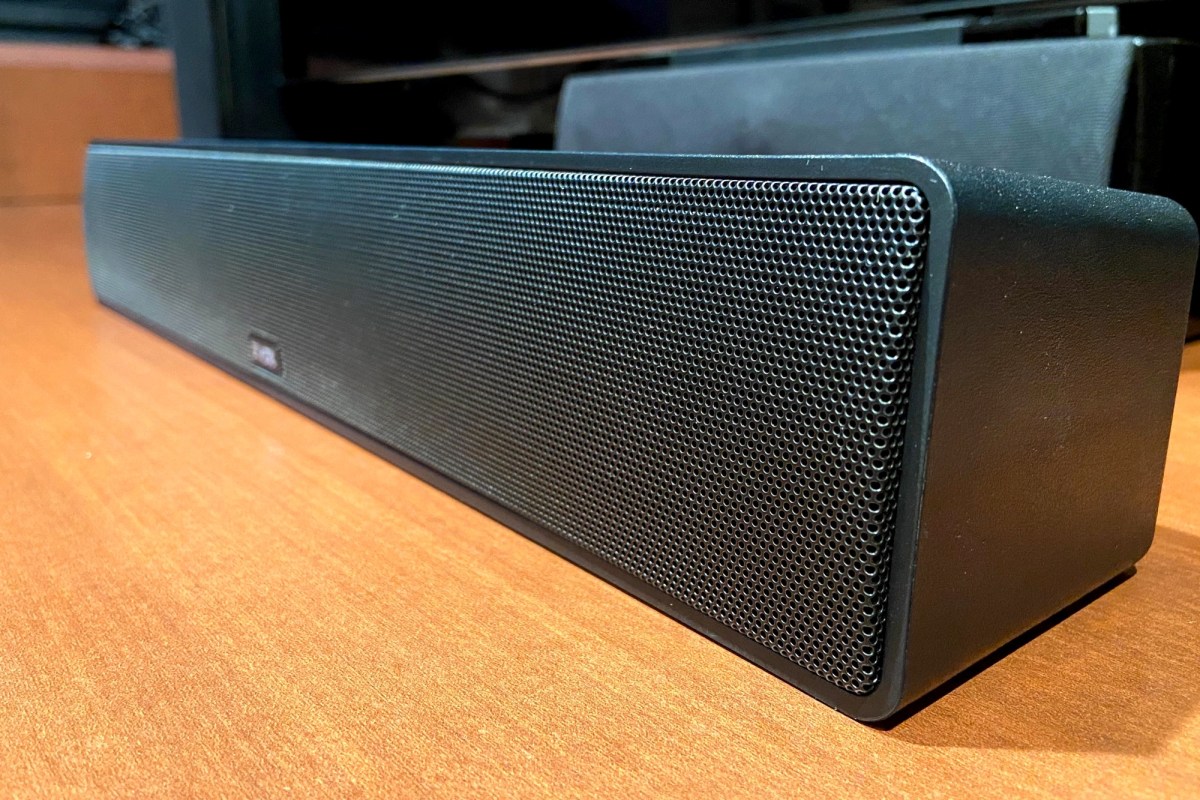
The AV157 comes in an easily recyclable cardboard box. A few polybags containing cables and a polyethylene sleeve for the speaker may need to go in the garbage depending on recycling facilities where you live, but otherwise, the packaging is pretty environmentally friendly.
Inside the box, you’ll find the speaker, a remote control, batteries, three types of audio cables (optical, 3.5mm analog, and RCA-to-3.5mm), a power supply, and a very clearly illustrated quick-start guide.
Design
The AV157 is available in three colors: Black, a grayish-pewter color called titanium, and “espresso,” which as the name suggests is a medium brown. Regardless of which one you pick, the color only affects the appearance of the speaker’s cabinet — the front metal grille is always black.
The cabinet surface is shiny, textured plastic. While it’s perfectly solid and well-built, the overall look and feel do not convey much in the way of high-end quality. It doesn’t look like you expect a $300 speaker to look — in fact, it couldn’t be more generic looking.
The upside to its plain-Jane façade is, whether you place it on a surface in front of your TV or wall-mount it (two threaded holes on the back make that possible) the AV157 is easy to ignore, which is perfect — I’m very much of the opinion that accessory speakers should be heard, not seen.
It’s about the size and shape of a large center-channel speaker (for those who are familiar with 5.1 setups), which means it’s tiny when compared to even the smallest of soundbars.
At 17 inches wide and just shy of three inches tall, it’s a good deal narrower than the $400 Sonos Beam, which at just 27 inches is already pretty small. It is the same width as the Panasonic Soundslayer and only an inch taller.
There are no physical buttons on the speaker and other than a small Zvox logo, nothing interrupts the just-a-speaker design.
Even the large, easy-to-read digital display which indicates volume level, input, and sound mode is hidden behind the grille, coming to life for just a few seconds so you can see the results of your remote commands before turning itself off again.
Around the back, you’ll find the sparse connection options: One optical port, one 3.5mm analog input, and one headphone and/or subwoofer output. For some reason, Zvox’s product page for the AV157 shows the 3.5mm analog input as compatible with an optical miniplug cable, but I can tell you for sure this is not accurate.
Connecting the AV157 to your TV couldn’t be easier.
These inputs, combined with the included cables, let you connect the AV157 to virtually any source as long as that source isn’t HDMI-only. Though rare, there are some TVs that are beginning to drop support for analog and optical outputs in favor of just HDMI ARC and eARC, so it’s best to double-check your TV’s outputs.
The included infrared remote control is equally nondescript design-wise: Just a small, sturdy, rubberized slab with big, easy-to-read labels and easy-to-press buttons. Thanks to the rubber membrane covering the buttons, the remote should be able to withstand encounters with the occasional spilled drink far better than normal remotes.
It would be nice if the remote’s buttons were backlit, but the high contrast of the bright white labels against the black of the membrane is still legible in all but the darkest of rooms.
Setup and connections

Connecting the AV157 to your TV couldn’t be easier. Simply select the appropriate cable (I recommend the optical cable for the best results), plug the ends of the cable into the corresponding ports on your TV and on the speaker, plug in the power adapter, and you’re done.
You should never have to guess what volume level you’re at, and the big, bright display means you’ll never be in doubt.
There’s no Bluetooth, no Wi-Fi, and no apps. This may limit the AV157’s functionality, but there’s something to be said for a piece of technology that works the moment you plug it in.
Which is not to say you can’t play music through the AV157 — you can. But you’ll need to hook up your music source to one of the available inputs, which may have been fine in the iPod era, but these days it’s a bit of drag.
One clever solution is to hook up the AV157 to an Amazon Echo device as an external speaker via the 3.5mm jack. As long as your favorite streaming music service is supported by Alexa, you’re good to go — no remote needed. Additionally, many of the popular music streaming apps are supported by the many smart TV operating systems. Navigating music on your TV might sound unusual, but it works.
Ease of use
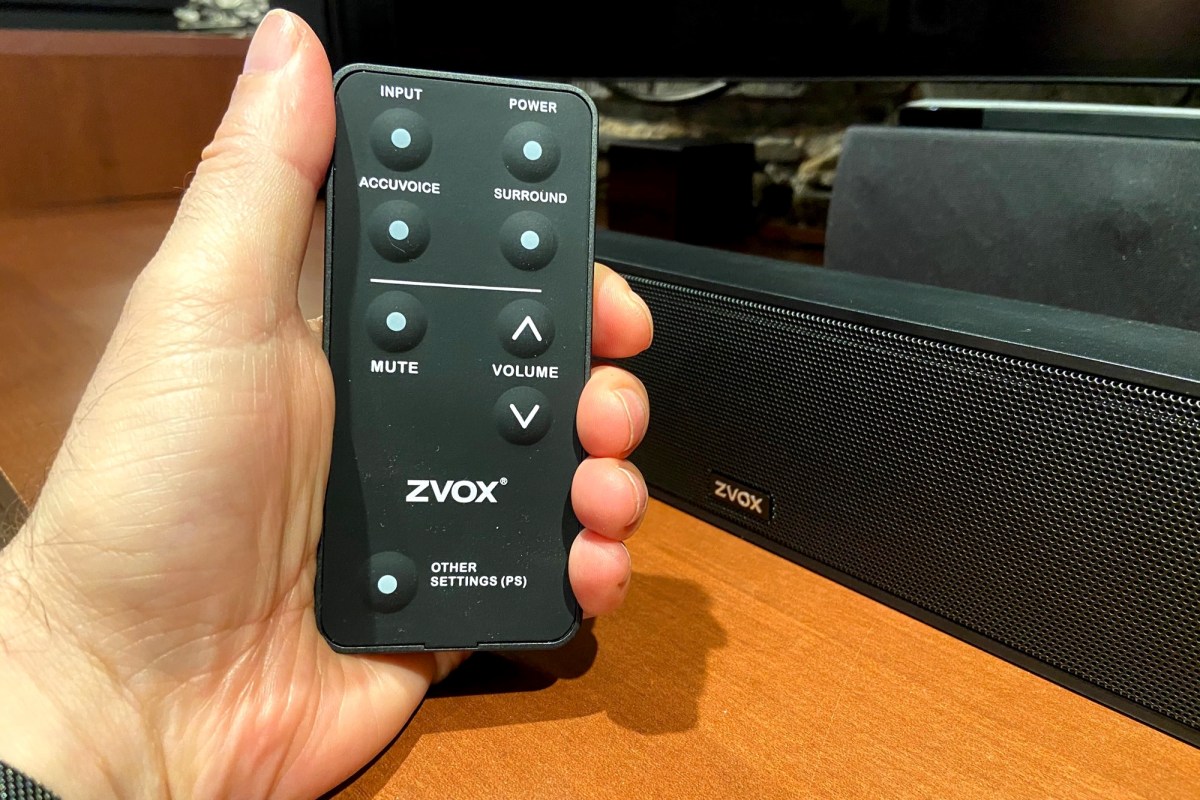
The included remote is a snap to use. Button presses produce immediate responses.
I’m a big fan of the four-digit alphanumeric display. You should never have to guess what volume level you’re at, or in the case of the AV157, which voice enhancement mode and level you’re on, and the big, bright display means you’ll never be in doubt. An adjustment for the brightness of the display would be a nice extra, especially when using the AV157 in very bright or dark rooms, but it’s never on for long enough for it to matter much.
You can use the AV157 with your existing remote for things like volume up/down and mute, but not all of its functions will be accessible. For this reason, you should definitely keep the factory remote handy.
As good as the remote is for basic features, the speaker’s deeper settings could be easier to use.
Although the labels are easy to read and the buttons easy to press, some of the features (like switching between Accuvoice and Supervoice modes) require a long-press on a button, instead of each mode getting its own discrete button.
This is especially true of the mysterious “Other Settings” button which lets you access three different adjustments: Bass, treble, and output leveling, but requires that you cycle through each adjustment, using the volume up/down to modify the settings.
On complex devices like A/V receivers, I get it — there are hundreds of settings and you can only have so many buttons. But the AV157 doesn’t do that much, and there appears to be lots of room on the remote for a few more buttons.
Still, these settings will be of the “set it and forget it” variety for most people, so while I’d prefer easier access to them, it’s not a deal-breaker by any means.
Sound quality
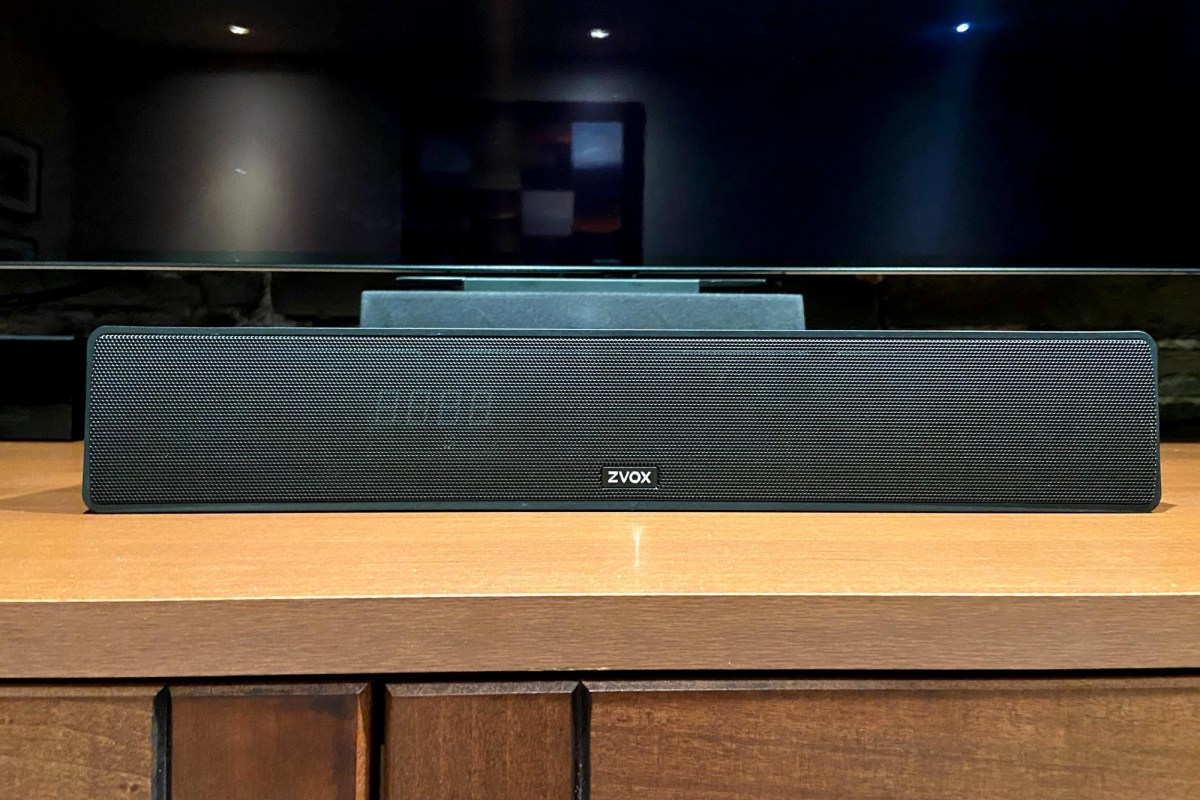
The Accuvoice AV157’s primary mission may be clearer dialog, but it’s a surprisingly good all-round speaker for all kinds of TV audio, with bigger, bolder sound than its tiny frame suggests.
Zvox’s promises of “room-filling 3D sound” might be a tad optimistic — especially when comparing the AV157 to what a budget soundbar with a wireless subwoofer can offer — but there’s no doubt that when you pump up the bass levels and use the third level of the surround sound mode, there’s more than enough power and range to enjoy Hollywood blockbusters like the Marvel’s Avengers movies.
Using just the standard six levels of Accuvoice enhancement is enough to make any speech far easier to hear.
It can also get remarkably loud if that’s what you desire. Near the top of the volume range, bass starts to bottom out, creating a slight knocking inside the cabinet, but that’s to be expected with a speaker of this size.
More importantly, though, it gives you a huge amount of control over the ability to hear dialogue.
Using just the standard six levels of Accuvoice enhancement is enough to make any speech far easier to hear. The moment you engage AC 1 — the first level — music, sound effects, and virtually all other non-voice audio dip noticeably while dialogue jumps forward.
The result is so stark and produces what feels like a big boost in volume, you may even reach for the remote to turn the volume down after entering Accuvoice mode.
Related: How Zvox’s Accuvoice tech makes voices easier to hear
Each successive level amplifies this effect further until voices have achieved an almost achingly bright amount of clarity. Shift the AV157 into Supervoice mode and the effect is even more pronounced. As someone who, thankfully, doesn’t suffer from any significant hearing loss, I can’t testify as to how well these modes will work for someone who does have hearing challenges, but it’s hard to imagine how voices could get any clearer. By the time you hit Supervoice level 6, the dialog is so sharp and bright, you can barely focus on anything else.
Incredibly, this is done with only a tiny amount of distortion creeping in — and only at the highest levels of boost.
It takes some getting used to, and it’s worth remembering there’s no free lunch here: In order to make dialog clearer, the AV157 de-emphasizes all other portions of the soundtrack.
As an experiment, I ran the AV157 from my TV’s optical port and my 5.1.2 home theater system from the HDMI ARC output simultaneously to see if I could have my cake and eat it, too. It kinda worked, but due to a small yet noticeable delay between the two sets of speakers, I couldn’t keep it going.
As for music on the AV157, it’s surprisingly good. I tested it using Tidal on an Apple TV 4K feeding into my TV via HDMI. What really stunned me is that the room-filling 3D sound which Zvox promises is much more apparent with music than with movie or TV soundtracks.
As you would imagine with a speaker built for speech enhancement, vocals are ultra-clear, even on the entry-level surround sound mode. The AV157 can’t quite compete with the Sonos Beam for music — it lacks the Beam’s warmth and resonant bass — but most genres sound very good.
You just have to be careful with some bass-heavy tracks. Post Malone and Swae Lee’s Sunflower is a good example of a song that, even at moderate volume, manages to exceed the AV157’s ability to reproduce bass, with more of that knocking effect I mentioned earlier.
Our take
The Zvox Accuvoice AV157 is a good way to get much better sound out of your TV via a very small speaker. But where it really excels is in speech enhancement — something you simply can’t get out of any normal soundbar at any price.
Is there a better alternative?
If speech enhancement isn’t critical, there are lots of great soundbars that can make your TV sound way better. And if a small speaker is important to you, the $400 Sonos Beam is a great place to start.
But, if better dialogue is your goal, the only real competition to the AV157 is one of Zvox’s other TV speakers, like the $250 AV155 or the tiny, $170 AV100 Mini. Each improves voice intelligibility, but only the AV157 has all twelve levels of the combined Accuvoice and Supervoice modes.
How long will it last?
Zvox’s warranty is only one year, but I’m guessing that if something’s going to go wrong with the AV157, it will happen very quickly. Otherwise, this speaker should provide you with many years of use. There’s no battery to replace and if the power adapter ever dies, it’s an affordable accessory. Even if the remote were to stop functioning, Zvox only charges $15 for a replacement.
Should you buy it?
Yes. For those who find it increasingly difficult to understand what’s being said in TV shows and movies, the AV157 is the best way to improve intelligibility without resorting to subtitles.


